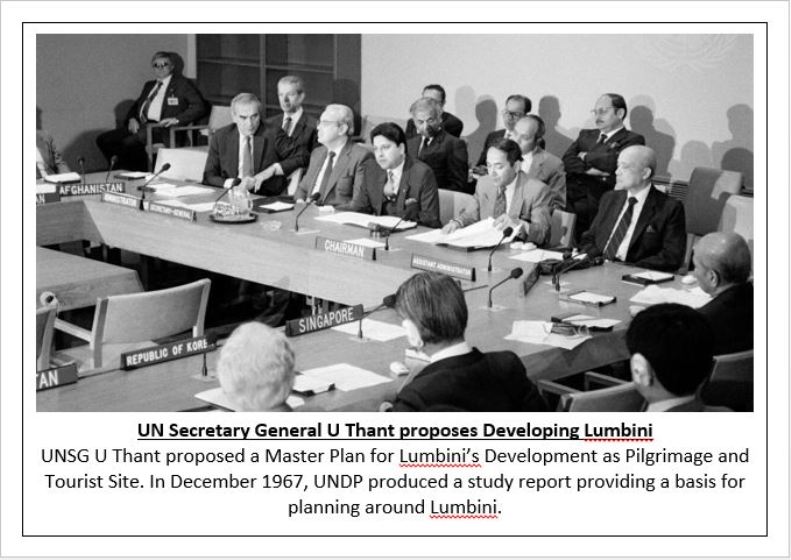KATHMANDU, Oct 28: UN Secretary-General Antonio Guterres is arriving in Kathmandu on a four-day official visit to Nepal, beginning from Sunday, with a significant stopover in Lumbini, the birthplace of Lord Buddha, the apostle of peace. He is also scheduled to join the prayers for world peace in Lumbini.
This visit not only symbolizes the secretary-general’s commitment to global peace but also highlights the UN’s long standing connection to the development of Lumbini. The UN’s involvement in Lumbini dates back to the early 1950s, and over the years, it has played a pivotal role in transforming Lumbini into a major center of pilgrimage and tourism, fostering peace and cultural exchange.
In 1967, the Government of Nepal initiated the development of Lumbini as a Buddhist pilgrimage site, aiming to enhance its physical infrastructure, including roads, water supply, electricity, and tourist facilities. That year, the then UN Secretary-General U Thant visited Lumbini, where he proposed the development of the site into a global center for pilgrimage and tourism.
The United Nations Development Programme (UNDP) got involved, initiating the Lumbini Development Project (LDP) in 1971 to support the sustainable development of Lumbini as a pilgrimage site. In 1972, the UNDP commissioned the renowned Japanese architect Kenzo Tange to design a master plan for Lumbini’s development, which was finalized and approved in 1978.
The International Committee for the Development of Lumbini (ICDL) was formed in 1970, initially comprising 13 member states and later expanding to 16. ICDL played a crucial role in the preparation of the Kenzo Tange Master Plan, which laid the foundation for Lumbini’s development.
Throughout the 1980s, UNDP continued its support for Lumbini’s growth, implementing projects such as the Lumbini Integrated Rural Development Project, which aimed to foster community development activities in the region. In 1985, the Lumbini Development Trust (LDT) was established by the Government of Nepal to oversee the development of Lumbini.
In 1997, the United Nations declared Lumbini a World Heritage Site, recognizing its historical and cultural significance on the global stage. The UNDP also initiated a series of missions in 1999-2000 to review the progress of Lumbini’s development and formulate a strategy towards its completion.
One significant milestone came in 2008 when the then UN Secretary-General Ban Ki-Moon visited Lumbini, reaffirming the UN’s commitment to peace and development in the region.
The UNDP has recently joined hands with the Lumbini Province Government to collaborate on various development areas, including the localization of Sustainable Development Goals (SDGs) and the creation of livelihoods and job opportunities in the region.
Secretary-General Guterres’ planned visit to Lumbini this time marks yet another step in the UN’s journey to promote peace, cultural understanding, and development at the birthplace of Lord Buddha. It underlines the United Nations’ commitment to continue supporting Lumbini’s transformation into a global symbol of harmony and spiritual heritage.
Credit:Source link



